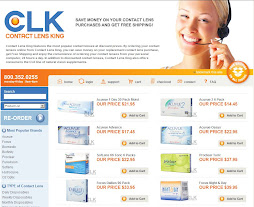Kids will be starting or returning to school in a few days and the hurried activity to get them ready with all their needed supplies is well underway. But have parents thought about one ‘item’ that can really help a child’s classroom performance—an eye exam?
Now is an ideal time to schedule an appointment with the eye doctor and establish a regular schedule of exams. In today’s classroom, a child’s eyes are confronted with all sorts of visual stimuli: overhead projectors, blackboards and whiteboards, text and workbooks, computers, and participation in school activities and sports. Reading and studying levels increase. Since school age children are at the stage where eyes change rapidly as they encounter normal growth patterns, a preventive stance certainly makes sense.
When experiencing a vision problem, a child may not say anything about it, as at their young age they will assume that is how everyone sees. In this situation the effects of dealing with an undiagnosed condition such as hyperopia (farsightedness) or myopia (nearsightedness) on the part of the child can lead to short attention spans, frustration, and avoidance of schoolwork. Amblyopia (lazy eye) is a condition that must be treated early (by the age of seven) or chances of good vision in the affected eye are considerably lessened. Unfortunately, there are times when an undiagnosed eye problem may be mistakenly labeled as a learning disability or behavioral issue. This unnecessary complication can be avoided by proactive eye exams, which allow problems to be detected and addressed before they hamper performance in the classroom.
Leaving the detection of eye trouble up to school screenings alone may not be a good idea. Many of these tests are based on evaluating clarity and distance; a child passing them could still have a vision problem. Necessary eye functions that allow for recognition, comprehension, and eye-hand coordination need to be monitored as well.
If the time comes for a child’s vision correction, eyeglasses are usually thought of first, but contact lenses are just as viable an option. Recent studies have shown that children as young as eight can be successfully introduced to contacts, especially in cases where the child’s sense of responsibility and follow-through allows them to satisfactorily assume the care regimen that comes with certain types of contacts. Once a child demonstrates the skill to handle contact lenses, then a consultation can take place with an eye doctor who will prescribe, fit, and monitor the proper lens. Positive results from contact lenses, other than vision correction, include perception of an improved appearance that heightens self-esteem and being able to better cope with sports and activities that are hindered by eyeglasses.
An important fact is that 80% of a child’s learning comes visually; so scheduling an eye exam now is not only a smart decision, but a necessary preventive approach when it comes to minimizing eye health problems.
Friday, August 27, 2010
Back to School: Pencils, Books, Backpacks, and an Eye Exam
Subscribe to:
Post Comments (Atom)





No comments:
Post a Comment